Techniques To Make Customers Brand Loyal

It's a cutthroat world out there when it comes to brand loyalty. More and more, customers are flitting from one brand to another when they find a lower price or other incentive to buy from a competitor.
So how can you foster loyalty among your customers?
1. Launch a Loyalty Program
Customers who have the opportunity to accrue loyalty points they can later redeem for products or discounts are more likely to stick with one brand. But don't think of those outdated paper loyalty cards we've all been toting around for decades (or else forgetting at home). Today's loyalty program is digital and therefore more relevant to tech-savvy shoppers.
Once you have a shopper enrolled in your mobile-based loyalty program, you can send her offers and coupons, and she can tap her phone at the terminal to accrue and redeem loyalty points. It's fun and beneficial to the shopper, as well as to your brand.
2. Create Interesting, Branded Packaging
More and more, retailers are using packaging as a means to create excitement with customers. Who doesn't recognize the ubiquitous Amazon logo when it's sitting on your neighbor's stoop? FitFabFun and Birchbox are two other examples of brands that invest in appealing design for their shipping boxes that creates a Pavlovian effect with recipients.
If you work with fulfillment services to ship your ecommerce products to customers, talk to them about your options for customized packaging.
3. Leverage Social Media
For many consumers, social media is where they go to learn about deals a given brand is offering. It is, in fact, a great platform for you to use to build loyalty with your customer base.
Remember to create exclusive offers for each social channel you use. This encourages people to follow you on each channel, since each provides different value. It also allows you to test out different offers, such as:
-
A BOGO link from Facebook
-
A coupon code for 20% off on Instagram
-
A link to sale priced items on Twitter
4. Get Personal
This is especially easy for smaller businesses who may know all their customers by face or name. But even if you sell products online, you can add an element of personalization to show your customers that you care about each and every one.
Send a followup email from the owner or president of the company, calling the customer by name:
Sally,
I just wanted to follow up and make sure you received your blue galoshes. Have you had a chance to wear them? I'd love your feedback on our products and your shopping experience.
Tammy
This type of email is more than a mass mailing (even if it is a mass mailing sent to all customers using their specific information, it comes off as highly personal), and can pull at the heartstrings of that customer, who then will be more compelled to shop with a brand that knows her by name.
5. Use Technology to Customize Offers
Once a customer is in your database, you have valuable information that will help you market to her in a very customized way. Today's email marketing software allows you to organize customers based on buying behavior so that you send only offers that are relevant to them, not a mass email that everyone gets, regardless of what they've bought from you in the past.
Imagine that shopper, Sally, who bought blue galoshes. The email she gets a few weeks later might say:
We just got in a shipment of navy blue raincoats that would go perfectly with your new galoshes! Click here to save 20%.
There's a high chance Sally would be swayed to buy a matching raincoat, especially at a discount.
6. Pay Attention to Feedback
There's a reason why we all go to Yelp before dining at a restaurant: user-generated content is leading the pack as far as influencing people to make buying decisions. If the feedback about your brand is all positive, then great. But it's on you to continually monitor what's being said about your brand and making any improvements based on less-than-positive feedback.
Being a brand that is proactive about its reputation and customer experience is one that shoppers will be loyal to.
Loyalty isn't a given; it's something a brand has to work toward and earn. By showing your customers that you care and giving them incentives to buy from you again and again, you'll succeed at forging long-term relationships with your customers.  About the Author: Jay Egger is a digital marketing specialist for Fit Small Business, a digital small business education publication with over one million unique monthly readers. He has experience in public relations, SEO, journalism, social media management and video production.
About the Author: Jay Egger is a digital marketing specialist for Fit Small Business, a digital small business education publication with over one million unique monthly readers. He has experience in public relations, SEO, journalism, social media management and video production.







